Canning at High Altitude. Adjustments must be made.
This page may contain affiliate links. More Information.
Home Canning at high altitude above 1,000 feet requires careful adjustments to your recipe. Changes need to be made for high-altitude water bath canning, steam canning, and pressure canning.
As your altitude goes above 1,000 feet above sea level, the atmospheric pressure is reduced. This causes water to boil at temperatures lower than 212 degrees Fahrenheit. Adjustments need to be made in the processing steps of all canning methods. This is true for all canning recipes.
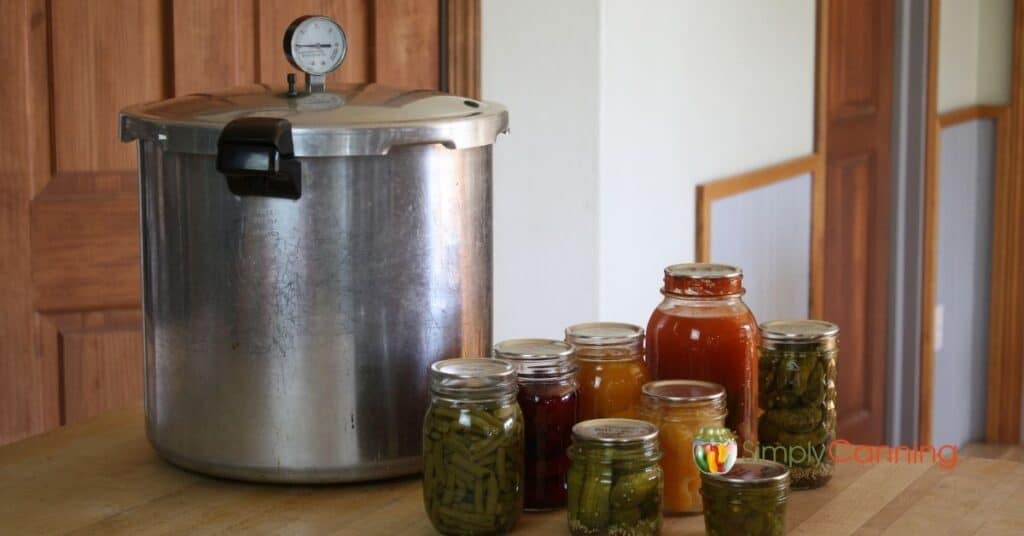
Elevation vs Altitude
So this is just for the grammarians out there. (who will pick up on the difference) The terms “elevation” and “altitude” are often used interchangeably, but they can have slightly different meanings depending on the context.
- Altitude: This term generally refers to the height of an object or point in relation to a specific reference point, which is usually the sea level.
- Elevation: This term also refers to the height of an object or point above a reference point but it can be a more general term. For instance Elevation can refer to height above sea level, ground level, or any other reference point. For example, a building’s elevation above the ground level would be a specific type of elevation measurement.
In the Canning context, altitude is a better term. But I think we probably all know what you mean if you say elevation. (I’ve been known to say elevation in the past… never again! hahaha)
Canning At High Altitude
Canning at High Altitude requires a few changes in processing. Changes will depend on the canning method you are using.
Water boils at lower temperatures as altitude increases due to decreased atmospheric pressure. Because if this, both pressure canning and water bath canning require adjustments in processing times or pounds of pressure at higher altitudes to ensure that canned foods are properly sterilized.
High Altitude Water Bath Canning
For safety in water bath canning, you must bring the contents of your jar to at least 212 degrees Fahrenheit. The lower boiling point at higher altitudes affects the temperature reached during boiling. To compensate for the temperature difference, you must increase processing time to maintain the boil for longer and ensure the jar reaches a safe temperature.
I’ve got more on water bath canning here.
Hight Altitude Steam Canning
Steam canning is simply a substitute for water bath canning. And a great substitute is is! The altitude adjustments that need to be made are pretty much the same, with one exception. If you have a canning recipe that needs to be processed for longer than 45 minutes (after adjusting for altitude) then you should not use a steam canner.
The reason is that you may end up boiling all the water out of the canner because of the length of time. There is no way to add water mid-processing.
I’ve got more on steam canning here.
High-Altitude Pressure Canning
The bacteria that cause botulism, a potentially deadly food poisoning, can survive at higher temperatures. This is a risk with low acid foods like meat and vegetables. Because of this you need to use a pressure canner to enable you to reach temperatures of 240 degrees Fahrenheit.
Boiling water may never reach 240 degrees… no matter how long you boil. It is not enough to increase boiling time. Because of this you need to use a pressure canner.
It is the pressure that pushes the temperatures up to a safe level for low acid foods. And your altitude affects the amount of pressure needed. To compensate for altitude differences, you must increase the amount of pressure used. The time does not change, only the pressure used.
I’ve got more on pressure canning here.
So In Short… As You Go Up in Altitude:
- Water Bath Canning – increase time.
- Steam Canning – increase time.
- Pressure Canning – increase pressure.
Time and pressure information is given in the recipes on this site. Any good research based canning recipe will have the information you need to adjust for your altitude. If it is not mentioned, question the entire recipe. If you are not in the same area as the author, your processing time/pressure may be different.
Altitude Adjustment Charts
Please Note: These are general recommendations for the adjustments to be made. However, there are recipes that may have different recommendations. If you are using a reliable research based tested resource, always go by the recipe in that resource.
Pressure Canning Altitude Charts
Altitude Adjustments Dial Gauge Pressure Canners
Altitude in Feet – Pressure to Be Used.
- 0 – 1000 ft – 11lb
- 1001-2000 ft – 11lb
- 2001-4000 ft – 12lb
- 4001-6000 ft – 13lb
- 6001-8000 ft – 14lb
- 8001-10,000 ft – 15lb
Altitude Adjustments for Weighted-Gauge Pressure Canners
Altitude in Feet – Pressure to Be Used.
- 0 – 1000 ft – 10lb
- 1,001 ft and above – 15lb
Water Bath Canning Altitude Chart
Altitude in Feet – Increase Processing Time
- 0-1,000 ft – use recipe time
- 1,001-3,000 ft – increase 5 minutes
- 3,001-6,000 ft – increase 10 minutes
- 6,001-8,000 ft – increase 15 minutes
- 8,001-10,000 ft – increase 20 minutes
Did you Know? Canning Jellies at High Altitude.
When you are making jam, jelly or other preserves, one of the methods to determine the ‘gelling point’ is by temperature. It is actually the easiest way in my opinion. And again that altitude affects temperature.
Using a candy thermometer, check the temperature of your jelly while boiling. When at the gelling stage, the jelly should be 8°F above the boiling point of water. There’s that boiling point again which is different depending on your altitude. Here is a chart provided by the National Center for Home Food Preservation with guidance on what temperatures you should aim for.
Gelling Point Chart
- 0-1,000 ft -220 ° F
- 1,000 ft -218 ° F
- 2,000 ft – 216 ° F
- 3,000 ft – 214 ° F
- 4,000 ft – 212 ° F
- 5,000 ft – 211 ° F
- 6,000 ft – 209 ° F
- 7,000 ft – 207 ° F
- 8,000 ft – 205 ° F
These temperatures are suggested by the NCHFP. But I’ve found that if I cook my jam and jelly to just a little higher than suggested… it seems to work better.
What is My Altitude For Canning?
What if you don’t know your Altitude? How do you find it? A Simply Canning Facebook reader shared this site, and it worked perfectly for me. Enter your address and find your elevation here: https://veloroutes.org/ (opens in another tab)
Here is another website that may work for you as well. https://www.freemaptools.com/elevation-finder.htm (opens in another tab)
Another option is to do a search for “your town, your state, altitude”. In my case, the first result was a Wikipedia article that included the elevation of my town. If you choose this search keep in mind altitude changes if you live in mountainous areas. If you live right in town you may not be the same altitude.
Another good option is to call your county extension agency. They may have some information for you.
Pin This to Find Later!
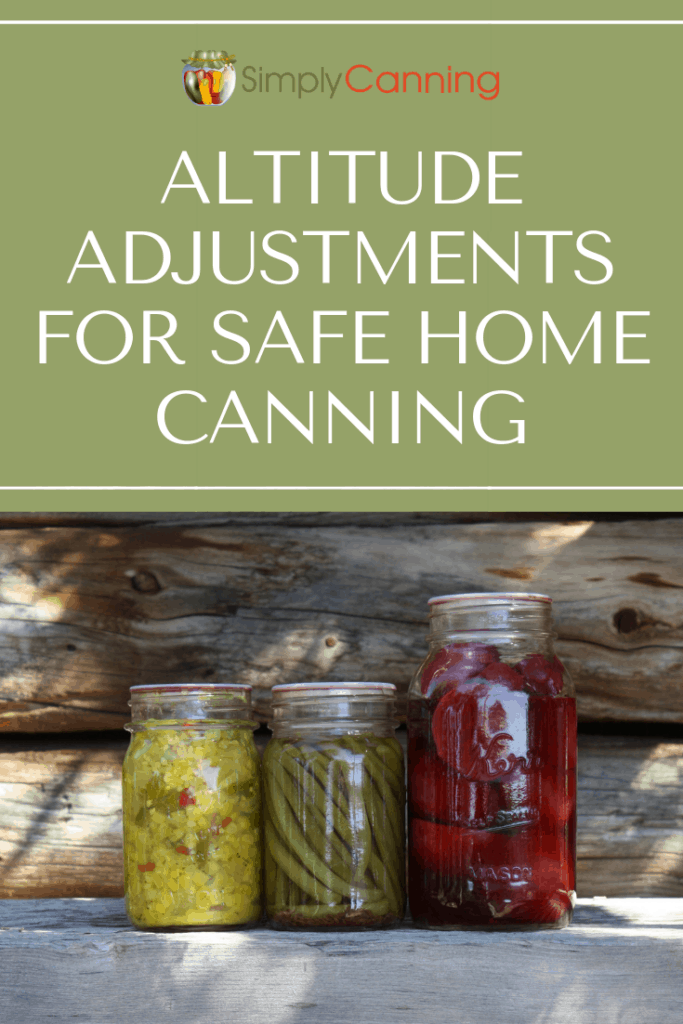
Resources
- Colorado State University Extension
https://extension.colostate.edu/topic-areas/nutrition-food-safety-health/canning-vegetables-9-348/ - National Center for Home Food Preservation
https://nchfp.uga.edu/

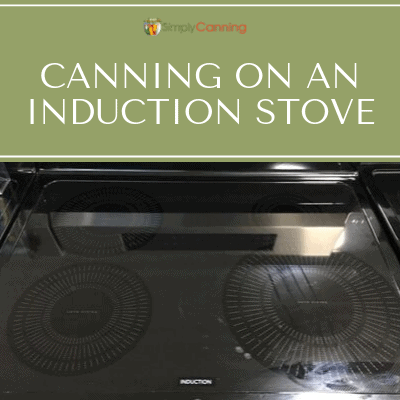
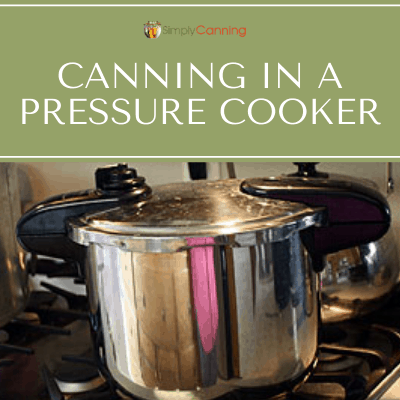
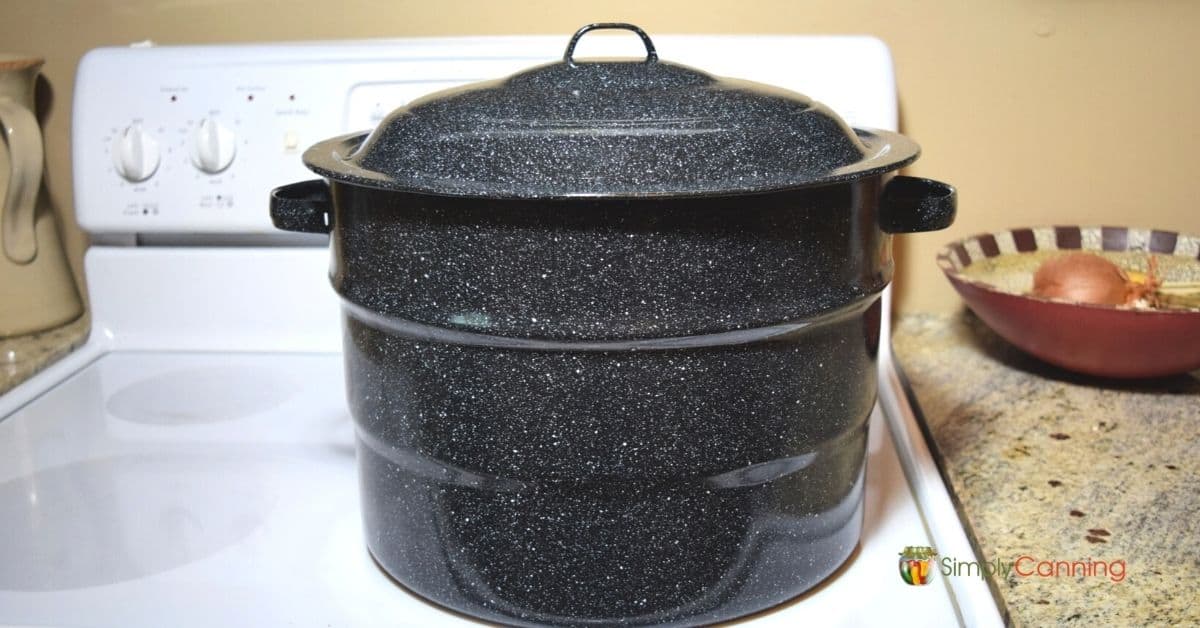
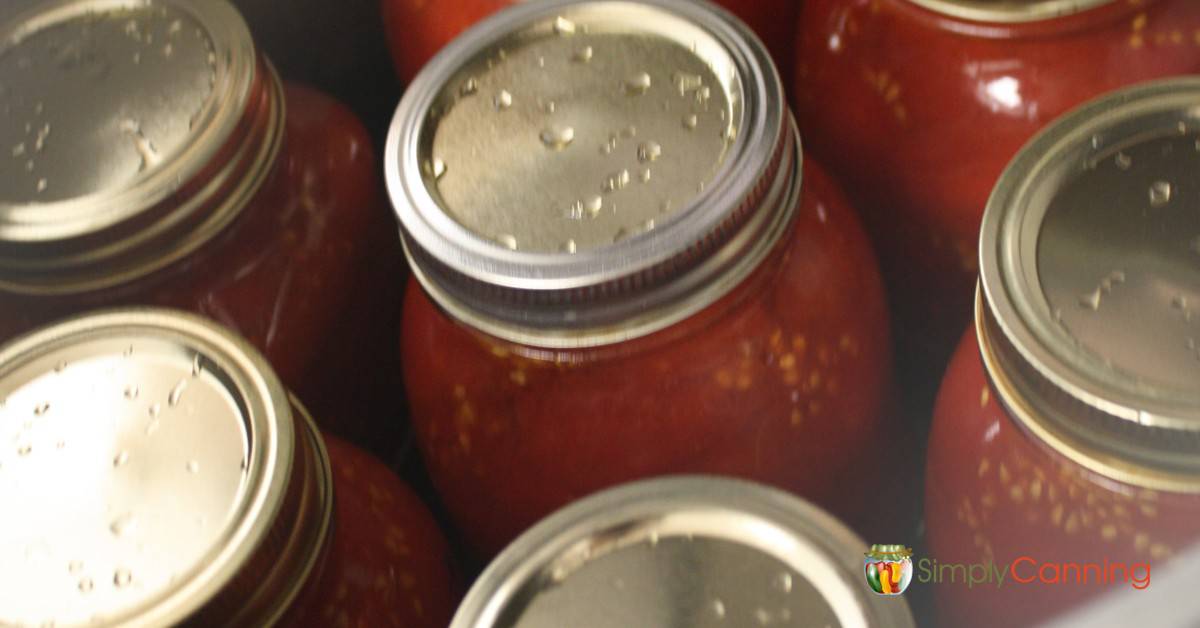
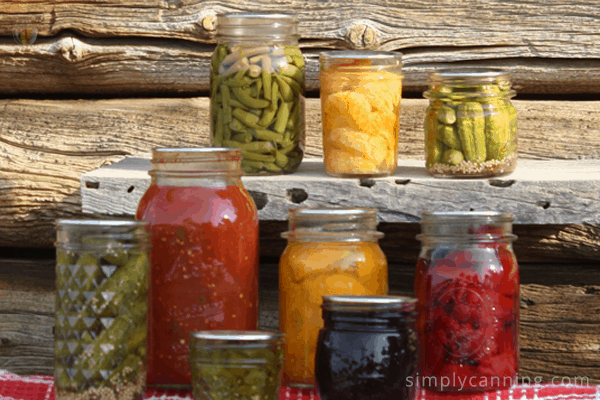
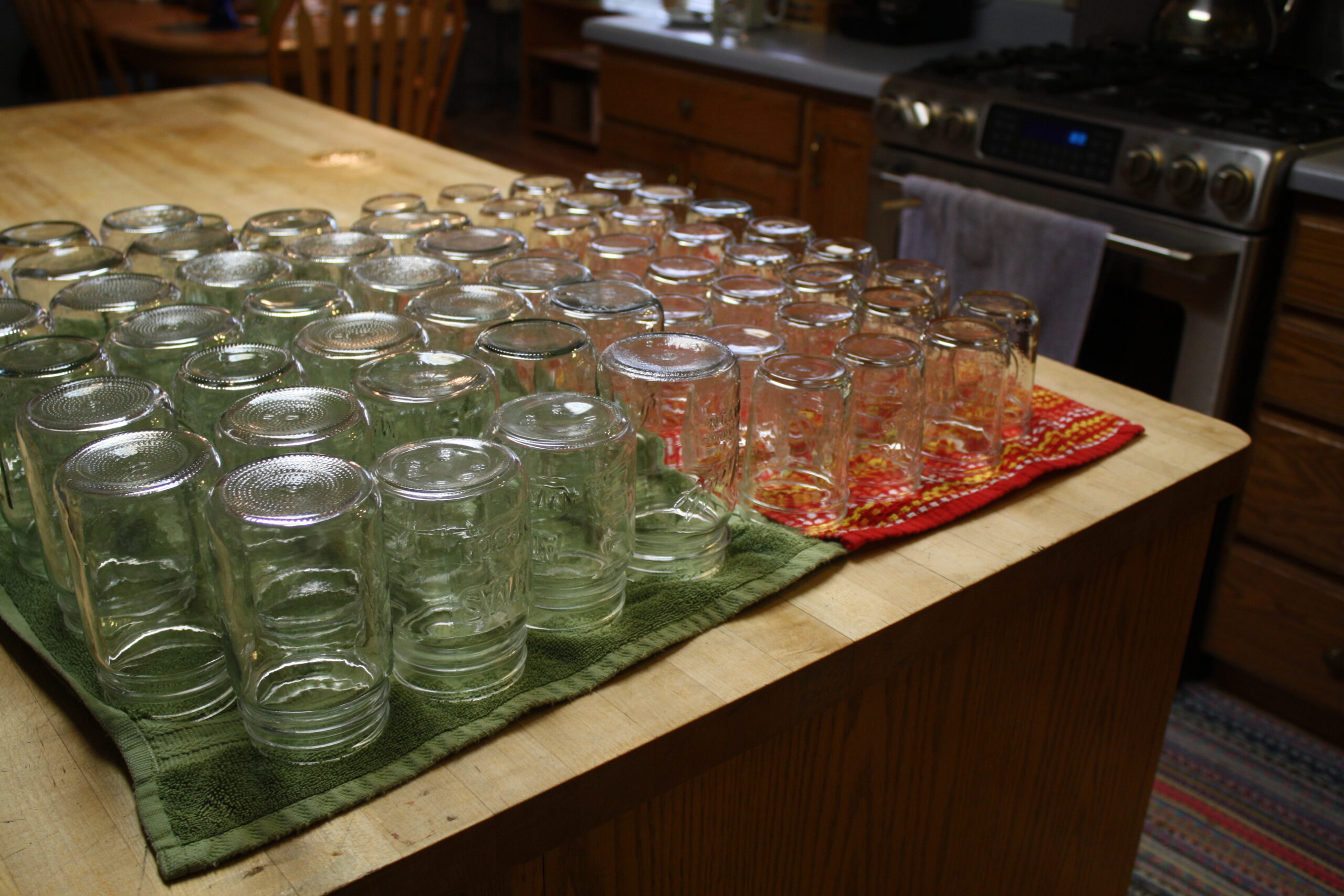
When canning at altitude, I don’t see how increasing the processing time can make a difference. At my elevation, water boils at 198 degrees. No matter how long I leave the jars in the water, the contents will never reach 212 degrees. I recently lost an entire batch of spaghetti sauce, which costs about $200. Before I try that again, I will invest in a pressure cooker.
You are correct, to have a water bath go longer won’t increase the heat. It simply allows more time for the heat to penetrate the food. But the waterbath would be for only fruit or other food appropriate for the waterbath. The waterbath is never a substitute for the pressure canner. It will never get to a high enough heat.
Your sauce likely needed to be in the pressure canner, where you will adjust the pressure to your altitude, not the time. Does that help explain it more clearly?
Having very little space for another bulky gadget, I did not want to buy a pressure canner for just occasional use. The National Center for Home Food Preservation recommended processing tomato sauce in a water bath for 55 minutes at my altitude of 7,200′. It took a long time to process 24 quarts, but it seems to have worked perfectly, and all the jars are well sealed. (Fingers crossed!)